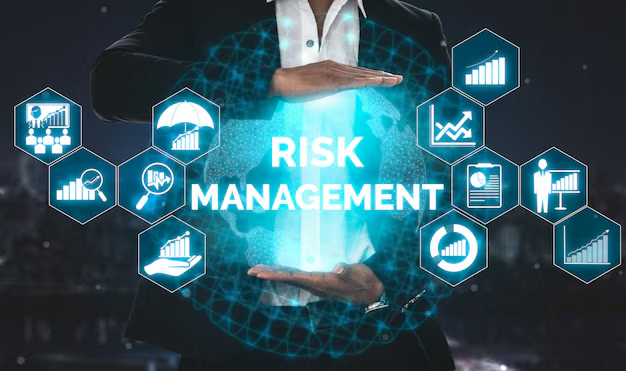Risk management is a critical component for the success and longevity of any business, and small businesses are no exception. Small businesses often face unique challenges, from limited resources to vulnerability to economic fluctuations and legal risks. Implementing effective risk management strategies can help small businesses navigate these obstacles, reduce potential losses, and capitalize on opportunities.
In this article, we will explore some of the best risk management strategies for small businesses, covering everything from identifying risks to creating actionable plans for mitigating those risks. By the end, you’ll have a better understanding of how to protect your small business and ensure it thrives in an increasingly complex and unpredictable business environment.
Key Takeaways
Identify and prioritize risks : to your business through regular risk assessments.
Diversify revenue streams : to protect against financial instability.
Obtain the right insurance coverage : to protect against potential losses.
Develop a business continuity plan : to ensure operations continue during disruptions.
Create an emergency fund : to safeguard your business against unexpected expenses.
Implement strong financial controls : to prevent mismanagement and fraud.
Invest in cybersecurity : to protect your business from digital threats.
Understanding Risk Management for Small Businesses
Also Read : Understanding Financial Analysis: Key Tools And Techniques For Business Success
Risk management refers to the process of identifying, assessing, and prioritizing risks followed by the application of resources to minimize or control the probability of unforeseen events. These events could be financial losses, legal troubles, or any other situation that could negatively impact a business’s operations or growth. For small businesses, managing risk effectively is crucial because they often lack the deep financial reserves or comprehensive insurance policies that larger organizations might have.
Also Read : What Should Small Businesses Consider In Their Insurance Policies?
The goal of risk management in a small business context is to anticipate potential risks, make plans to prevent them or reduce their impact, and respond promptly when issues arise. It’s an ongoing process that evolves with the business as it grows and faces new challenges.
Types of Risks for Small Businesses
Before diving into strategies, it’s essential to understand the various types of risks small businesses may encounter. These can include:
Also Read : What Are The Essential Nutrition Our Bodies Need?
- Financial Risks: These involve issues like cash flow problems, unexpected expenses, and insufficient funding.
- Operational Risks: These are risks tied to day-to-day business operations, such as supply chain disruptions, IT failures, or employee-related problems.
- Strategic Risks: These risks stem from a poor business strategy, competition, or changes in the market.
- Legal and Compliance Risks: This includes legal disputes, regulatory violations, and failure to comply with industry laws or standards.
- Reputational Risks: These relate to damage to the business’s reputation, such as negative customer feedback, product failures, or public relations issues.
- Environmental Risks: These are external factors such as natural disasters, economic downturns, or geopolitical instability.
Also Read : What Are The Best Exercises For Building Muscle Strength?
Understanding these types of risks is the first step in developing a comprehensive risk management strategy.
Best Risk Management Strategies for Small Businesses

Also Read : What Factors Affect The Cost Of Insurance Coverage?
Now that we’ve covered the types of risks, let’s take a look at some of the most effective risk management strategies for small businesses.
Conduct a Comprehensive Risk Assessment
The first step in any effective risk management strategy is identifying the risks your business faces. A risk assessment allows you to analyze all aspects of your business and determine which risks pose the greatest threat.
How to conduct a risk assessment:
- List all potential risks: Consider internal risks (like staffing issues or operational inefficiencies) and external risks (such as economic shifts, market competition, and regulatory changes).
- Evaluate the likelihood and impact: For each risk, assess how likely it is to happen and the potential damage it could cause. Rank them according to severity.
- Prioritize risks: Focus on high-probability, high-impact risks that could cause the most harm to your business.
By conducting a thorough risk assessment, you gain a clearer picture of where your business is vulnerable and can prepare accordingly.
Diversify Your Revenue Streams
A great way to mitigate financial risk is by diversifying your revenue streams. Relying on a single product, service, or client can make your business highly vulnerable to market shifts, changes in customer preferences, or other unpredictable events.
How to diversify your revenue:
- Expand product/service offerings: Add new products or services to your portfolio to appeal to different customer segments.
- Target different markets: Look for new markets or geographic regions where you can expand.
- Increase sales channels: Explore online sales, wholesale, or distribution partnerships to reach more customers.
Diversification ensures that if one revenue stream falters, others can keep your business afloat.
Obtain the Right Insurance Coverage
Insurance is one of the most effective ways to protect your business against financial losses. Small businesses should invest in the right types of insurance to cover various risks, including property damage, liability claims, and business interruption.
Key types of insurance for small businesses:
- General liability insurance: Covers accidents, injuries, and claims of negligence.
- Property insurance: Protects your physical assets (buildings, equipment, inventory) from damage or theft.
- Professional liability insurance: Also known as errors and omissions insurance, it covers legal costs in case of negligence or mistakes in your services.
- Workers’ compensation insurance: Provides coverage for employees who get injured on the job.
Ensuring that you have the right insurance can provide peace of mind and financial protection in times of crisis.
Develop a Business Continuity Plan

A business continuity plan (BCP) is a strategy that ensures your business can continue to operate, even during times of disruption. Whether it’s a natural disaster, a data breach, or an economic crisis, having a BCP in place is essential for minimizing downtime and reducing the impact of these disruptions.
Key elements of a business continuity plan:
- Risk assessment and impact analysis: Identify potential risks and determine how they would affect your business.
- Recovery strategies: Outline procedures for keeping your business operational during a crisis. This includes backup systems, emergency procedures, and alternative work locations.
- Communication plan: Develop clear communication channels to keep employees, customers, and stakeholders informed during a crisis.
A solid BCP allows you to respond quickly to unforeseen events and keep your business running smoothly.
Create an Emergency Fund
One of the best ways to mitigate financial risk is by having an emergency fund. This fund acts as a financial buffer that can help cover unexpected costs, such as medical expenses, equipment failure, or a temporary loss of revenue.
How to build an emergency fund:
- Set aside a percentage of your revenue: Aim for saving at least three to six months’ worth of operating expenses.
- Use it only for emergencies: The fund should only be tapped into when necessary to ensure that it is available in a time of crisis.
Having a financial cushion allows you to weather short-term setbacks without affecting the overall stability of your business.
Implement Robust Financial Controls
Financial mismanagement can lead to significant risks for small businesses, particularly when it comes to cash flow problems, fraud, and overspending. Implementing strong financial controls helps you monitor your business’s finances and reduces the risk of these issues.
Key financial controls include:
- Budgeting and forecasting: Regularly track income and expenses and set realistic financial goals.
- Segregation of duties: Assign different employees to handle various financial tasks (e.g., one person handles invoicing, while another manages payments) to prevent fraud.
- Regular audits: Conduct internal and external audits to ensure the integrity of your financial practices.
Financial controls help protect your business from financial mismanagement and provide transparency for stakeholders.
Invest in Cybersecurity

In today’s digital world, cybersecurity risks are a growing concern for small businesses. A data breach or cyberattack can not only lead to financial loss but also damage your reputation and erode customer trust.
How to protect your business:
- Use strong passwords and multi-factor authentication: Implement strong password policies and require multi-factor authentication for critical systems.
- Regular software updates: Ensure all software, operating systems, and applications are regularly updated to protect against vulnerabilities.
- Employee training: Educate employees on recognizing phishing attacks and following best practices for data security.
- Backup critical data: Regularly back up important data to an off-site or cloud storage service to protect against ransomware attacks.
Investing in robust cybersecurity measures protects your sensitive business data and minimizes the risk of cyber threats.
Also Read : How Do Corporate Finance Decisions Impact Shareholder Value?
Conclusion
Risk management is an essential element of a small business’s long-term success. By identifying potential risks, implementing effective strategies, and regularly reviewing your business’s risk exposure, you can reduce potential losses and create a more resilient and adaptable business.
The key to managing risk is taking proactive steps—such as diversifying revenue, ensuring proper insurance coverage, and implementing financial controls—that reduce the likelihood of negative events and minimize their impact. A comprehensive risk management strategy is a dynamic tool that should evolve with your business as it grows.
FAQs
Why is risk management important for small businesses?
Risk management helps small businesses identify potential threats, reduce the impact of unforeseen events, and improve decision-making, ensuring long-term success and financial stability.
What is the first step in developing a risk management strategy?
The first step is conducting a thorough risk assessment, which involves identifying and evaluating potential risks that could impact your business.
How do I know if my business needs more insurance coverage?
If your business faces significant financial risks, such as potential property damage, legal claims, or employee-related incidents, you should consider reviewing and expanding your insurance coverage.
Can diversification really protect my small business?
Yes, diversification reduces the risk of relying too heavily on a single revenue stream, product, or market. If one area suffers, others can help sustain the business.
What should I include in my business continuity plan?
Your BCP should include risk assessments, recovery strategies, and a communication plan to keep employees and customers informed during a crisis.
How can I ensure my business stays financially stable during tough times?
Maintaining an emergency fund, implementing financial controls, and regularly reviewing your business’s financial health are essential steps to ensuring financial stability.
What are the most common risks for small businesses?
The most common risks for small businesses include financial instability, operational disruptions, legal compliance issues, and reputational damage.





